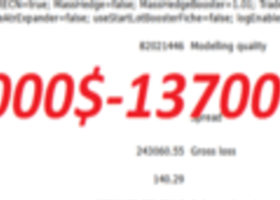
EUR Has Failed To React To Additional ECB Easing - Goldman Sachs
...We anticipate that: The ECB will revise downward the 2016 inflation forecast to -0.1% from 1.0% and the 2017 forecast from 1.6% to 1.5%, and step up the pace of monetary accommodation by cutting the deposit rate by 10bp and expanding the pace of the public sector purchase programme (PSPP) by EUR10bn per month.
The European rates market is pricing in further monetary accommodation from the ECB, broadly in line with our economists’ base case view. By contrast, EUR/$ has traded in a range between 1.0796 and 1.1323. Although it is challenging to assess the extent to which ECB easing has been priced in the EUR, in our view the currency has failed to react in any sizeable way to the additional monetary stimulus that ECB President Draghi put on the table on January 21. Indeed, EUR/$ is trading slightly above its level on the day of the Governing Council meeting and, over the past month, changes in EUR/$ have tracked quite closely movements in 2-year USD rates, rather than movements in EUR rates, reflecting the turn in the US data.
This is remarkably different to what has happened in the past, such as when President Draghi had pre-announced QE at the Jackson Hole conference in August 2014 and, more recently, after the September 2015 ECB meeting. After the disappointment in December, short positions in the currency have not been an appealing trade to express the ECB’s easing signals. EUR net shorts stand at their lowest level since June 2014 and have declined to $6.5bn from $22bn at the beginning of the year.
PS: Copy signals, Trade and Earn on Forex4you - https://www.share4you.com/en/?affid=0fd9105


